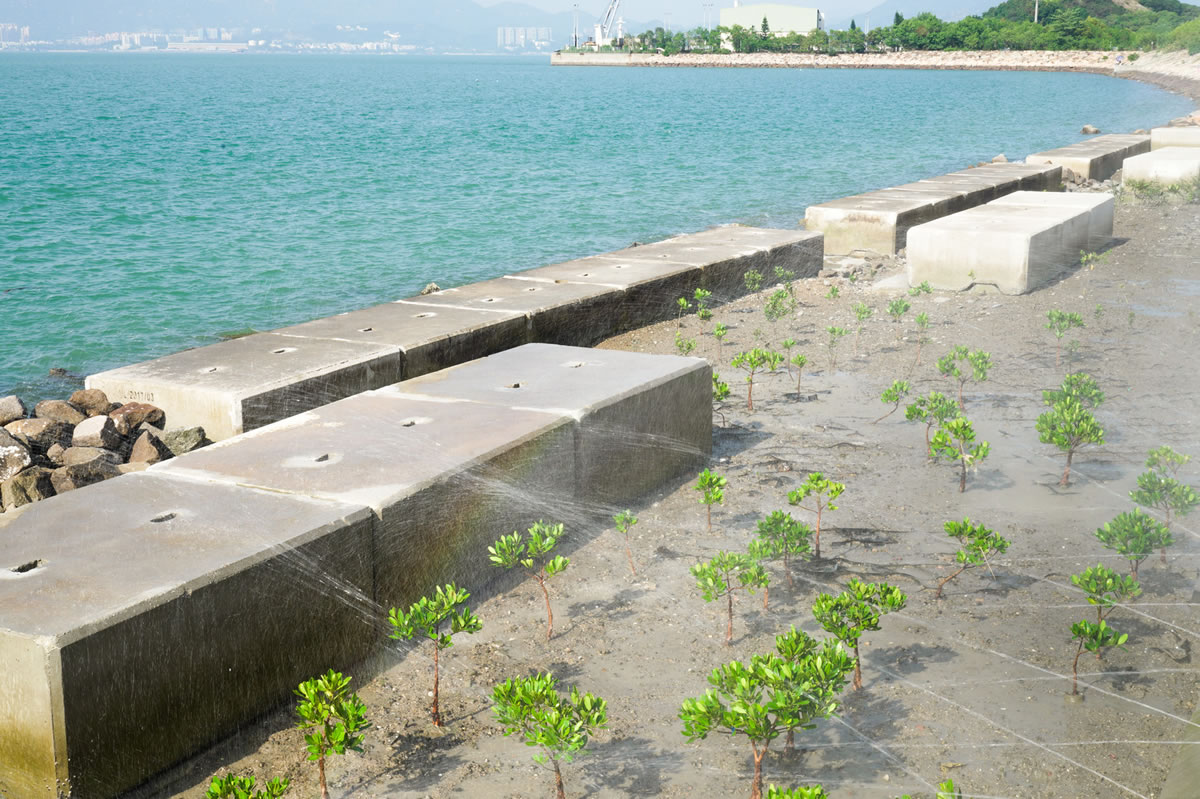
AECOM香港土地供应及市政执行董事

Hong Kong’s green finance credentials can help plug Asia’s US25 billion gap in funding for climate change resilience, says Fitch
Ten of 15 nations identified by Fitch as having the highest physical exposure to floods and storms are in Asia
Green bonds can be used to raise funds for ‘adaptation’ projects that bolster resilience against the effects of climate change
Hong Kong, a major player in the Asian green bond market, can help plug a financing gap of some US$25 billion a year in Asia for projects that enhance the resilience of cities to climate change, according to Fitch Ratings.
“Hong Kong plays a key role in the Asian green bond market,” said Nneka Chike-Obi, director of Sustainable Fitch, the sustainable finance research unit of the credit ratings agency, in written comments to the Post.
“For [mainland] China, its banks are one of the largest sectors involved in issuing green bonds and have used their Hong Kong branches to issue regularly.”
Many green bonds issued by governments are used to finance climate change “mitigation” projects that reduce greenhouse gas emissions. But others raise funds for “adaptation” projects that bolster resilience against the effects of climate change.
“The Hong Kong government is an active green bond issuer itself … which has helped raise the standard of sustainable bond knowledge in the region among financial institutions and other service providers,” Chike-Obi said.
Since 2019, the government has printed some US$10.7 billion of green bonds, which are used to fund eight types of projects, including waste water management infrastructure that would increase the city’s resilience against rainstorms and typhoons.
Ten of 15 nations identified by a Fitch report last month as having the highest physical exposure to floods and storms are in Asia, including Vietnam, the Philippines, Thailand, China and Singapore.
The region also has three – Vietnam, Japan and Thailand – out of 15 countries considered to be the most vulnerable to rising sea levels.
Global warming is linked by scientists to more incidences of extreme rainfall, floods and storm surges.
“Asian cities, [including] some island nations, are very exposed to climate change,” Chike-Obi said. “The financing gap for climate adaptation in Asia is estimated at US$25 billion per year, as we are looking forward to 2030. The bond market is positioned well to provide a significant amount of it.”
Developed nations agreed in 2009 to provide US$100 billion per year to help developing countries to mitigate and adapt to climate change. But the amount donated had reached only US$80 billion in 2019.
Only a quarter of the sum raised was allotted for adaptation projects, well short of the 50 per cent considered by United Nations secretary general Antonio Guterres to be necessary.
Countries agreed during the Glasgow climate talks last month that developed nations would double the funding provided to developing countries for adaptation by 2025 to US$40 billion.
“The heightened cost of servicing debt, combined with decreased government revenues [due to the Covid-19 pandemic], may hamper future government spending on adaptation, particularly in developing countries,” said UN Environment Programme executive director Inger Andersen in a report last month.
“We need to further increase public adaptation finance, including by overcoming barriers for private sector engagement.”
Thomas Tang, executive director of Hong Kong land supply and municipal at US-based infrastructure consulting firm AECOM, said the city’s coastal areas, especially underground structures such as the subway system and car parks are among the most vulnerable to climate risks.
However, the city’s flood resilience is relatively robust because its station entrances are built above street levels, and the system is equipped with water protection gates.
AECOM, which has advised the Hong Kong government on new town developments and key infrastructure such as the airport, is doing a climate resilience study for the city.
He said Hong Kong’s flood resilience has much improved in recent decades as the government has spent some HK$30 billion on flood prevention projects, including about 2,500 storm drains.
For coastal areas, both hard infrastructure like sea walls and nature-based landscaping solutions that reduce the impact of waves and storm surges should be considered, he added.
“The disadvantage of sea walls is that they are very unsightly, considering that waterfront real estate is often the most valuable,” he said. “Eco-shorelines are aesthetically more attractive, easier to maintain and improves the area’s biodiversity, but it takes longer to be completed.”
AECOM is the design and construction consultant for the Tung Chung new town east extension land reclamation project, which includes eco-shorelines.
